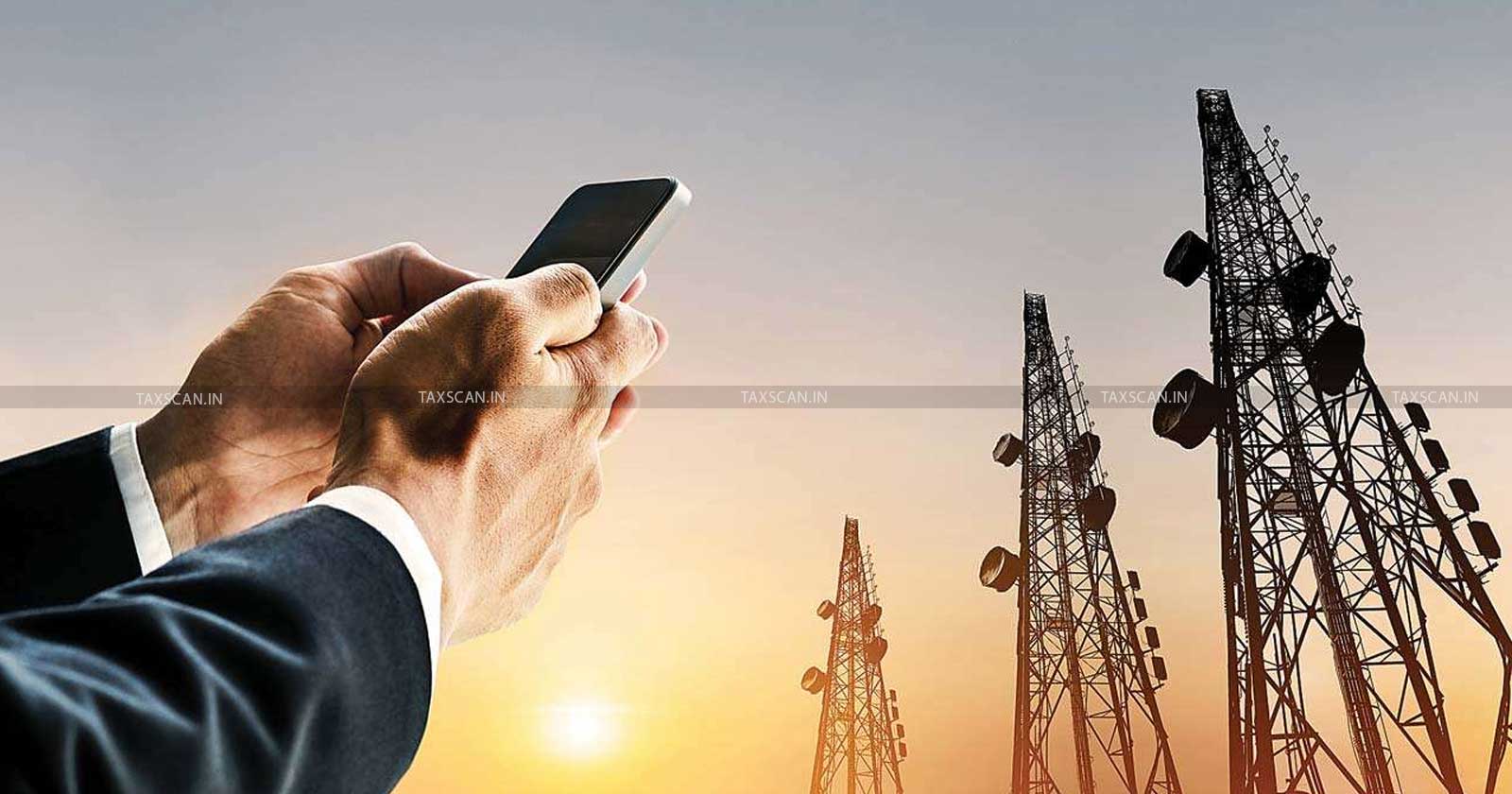Mobile Tower, PFBs are “Goods”, Not immovable Property making them Valid Inputs: Supreme Court allows Cenvat Credit Claim [Read Judgement]

Cenvat Credit for Telecom Industry – Mobile Service Providers Tax – Supreme Court Mobile Tower Decision – Telecom Sector Tax – taxscan
Cenvat Credit for Telecom Industry – Mobile Service Providers Tax – Supreme Court Mobile Tower Decision – Telecom Sector Tax – taxscan
The Supreme Court of India has delivered a landmark judgement affirming that mobile towers and pre-fabricated buildings (PFBs) used by Mobile Service Providers (MSPs) qualify as "goods" and not immovable property. This ruling enables MSPs to claim CENVAT credit on excise duties paid for these items under the CENVAT Credit Rules, 2004, a decision that resolves a long-standing controversy in the telecom sector.
The issue before the Court was whether mobile towers and PFBs, integral components of telecommunication services, could be categorised as capital goods or inputs under the CENVAT Credit Rules. The case arose due to conflicting rulings from two High Courts.
Boost Your Business with SME IPO Funding Strategies - Enroll Now
The Bombay High Court had held that mobile towers and PFBs become immovable property upon installation, thereby disqualifying them for CENVAT credit. In contrast, the Delhi High Court ruled in favour of MSPs, stating that these items are movable and essential for telecommunication services, making them eligible for credit.
The Supreme Court examined the nature of mobile towers and PFBs, observing that these items are typically delivered in a knocked-down state and are bolted or fastened to the ground merely for stability. Such fastening, the Court stated, does not render them immovable property, as they can be dismantled and relocated without significant damage. Consequently, the Court ruled that mobile towers and PFBs are movable goods.
In the show cause notice in question, the goods involved include, among other items: (i) towers and parts of towers; and (ii) prefabricated buildings (PFBs) used as shelters to protect transmission devices, which are central to these proceedings.
Boost Your Business with SME IPO Funding Strategies - Enroll Now
The Commissioner imposed penalties, noting that items like towers, antennas, and PFBs have independent and specific functions. They cannot be considered a single integrated unit and, therefore, cannot be treated as "capital goods," making them ineligible for CENVAT credit.
The Revenue held that only equipment such as Base Transceiver Stations (BTS), transmitters, and antennas—which are used in providing telecom services and are covered under various Chapters specified in Rule 2(a)(A)—are eligible for CENVAT credit, as per the Commissioner's order dated December 19, 2006.
This order was challenged before the Customs, Excise, and Service Tax Appellate Tribunal (CESTAT) in an appeal, along with another order concerning the recovery of the penalty amount. However, the CESTAT upheld the Revenue's decisions.
Boost Your Business with SME IPO Funding Strategies - Enroll Now
The matter then went on appeal to the Bombay High Court, which, in its order dated August 26, 2014, also upheld the decisions of the Revenue authorities. The High Court concluded that, according to the definition clauses in the CENVAT Rules, the items in question—towers and their parts—become immovable properties once they are fastened and fixed to the earth after erection. As a result, they cannot be classified as "capital goods."
Furthermore, towers and other parts in completely knocked down (CKD) or semi-knocked down (SKD) condition fall under Chapter Heading 7308 of the Central Excise Tariff Act. This heading is not specified in either clause (i) or clause (ii) of Rule 2(a)(A) of the CENVAT Rules to be treated as "capital goods."
Boost Your Business with SME IPO Funding Strategies - Enroll Now
Notably, Heading 7308 of the Central Excise Tariff Act covers structures and parts made of iron or steel, excluding PFBs. According to Rule 2(a)(A), "capital goods" means (unless the context otherwise requires):
"(i) all goods falling under Chapter 82, Chapter 84, Chapter 85, Chapter 90, [heading 6805, grinding wheels and the like, and parts thereof falling under [heading 6804 and wagons of sub-heading 860692]] of the First Schedule to the Excise Tariff Act;
(ii) pollution control equipment;
(iii) components, spares, and accessories of the goods specified at (i) and (ii);
(iv) moulds and dies, jigs and fixtures;
(v) refractories and refractory materials;
(vi) tubes and pipes and fittings thereof;
(vii) storage tank; [and]
[(viii) motor vehicles other than those falling under tariff headings 8702, 8703, 8704, 8711 and their chassis [but including dumpers and tippers]],
used—
(1) in the factory of the manufacturer of the final products; or
[(1A) outside the factory of the manufacturer of the final products for generation of electricity [or for pumping of water] for captive use within the factory; or]
(2) for providing output service;"
The High Court also rejected the argument that a tower is an accessory to an antenna simply because an antenna cannot be installed without it and, consequently, cannot function. Therefore, the tower should not be treated as a part or component of the antenna.
It was concluded that not all capital goods are eligible for credit—only those "capital goods" that fall under Rule 2(a)(A)(i) and (ii), relate to the output services, and are mentioned in the CENVAT Rules qualify. Towers, their parts, and PFBs cannot be considered "capital goods" for CENVAT credit purposes because they are neither specified nor are they components, spares, or accessories of goods falling under any of the Chapters or Headings listed in Rule 2(a)(A).
This decision was then challenged before the Supreme Court.
Boost Your Business with SME IPO Funding Strategies - Enroll Now
Contrarily, the Delhi High Court in its decision in *Vodafone Mobile Services Limited vs. Commissioner of Service Tax* held that (1) the items in question were movable goods, and (2) credit could be availed on them as they fall under the definition of "capital goods," qualifying as "accessories" or "components" of the BTS and antenna.
The Delhi High Court observed that the entire tower and shelter are fabricated in manufacturers' factories and supplied in CKD condition to mobile service providers. These structures are merely fastened to the civil foundation to ensure stability and prevent wobbling. It was also held that towers and PFBs can be unbolted, reassembled without damage, and relocated to new sites.
The High Court further noted that towers and PFBs are accessories of capital goods under Rule 2(a)(A). An accessory is defined as an article or device that adds to the convenience or effectiveness of something else but is not essential to its function. The court held that the tower must be considered an essential component or part of the "capital good," namely the BTS and antenna. The antenna, which receives and transmits signals used for providing mobile services, cannot be installed at the required height without the tower.
Boost Your Business with SME IPO Funding Strategies - Enroll Now
PFBs were also considered accessories because they house various BTS equipment and other devices in a dust-free environment with controlled temperature.
Before the Supreme Court, the assessees primarily argued that the mobile tower is an accessory of the antenna, which is part of the BTS. Since the antenna and BTS fall under Chapter 85 and are considered "capital goods," the mobile tower, being an accessory to them, should also be treated as a "capital good" under sub-clause (iii) of Rule 2(a)(A). A similar argument was made for PFBs. They also contended that the items should be considered movable properties and thus qualify as "goods."
On the other hand, the Revenue Authorities argued that towers and PFBs have independent functions and specific utilities, preventing them from forming part of a composite system or single unit. Therefore, they cannot be considered accessories of the antenna or BTS. The Revenue also disputed the claim that these items were movable properties, asserting that they are primarily fixed to the earth and incur damage upon reinstallation.
Boost Your Business with SME IPO Funding Strategies - Enroll Now
The Supreme Court observed that mobile towers and PFBs qualify as movable properties and can be considered "goods."
The Court first examined the meaning of "goods," relying on Section 2(27) of the General Clauses Act, 1897, which states:
"'goods' means every kind of movable property other than actionable claims and money; and includes stocks, shares, growing crops, grass, and things attached to or forming part of the land which are agreed to be severed before sale or under the contract of sale."
The Court then explored what constitutes "movable property" to fall under the definition of "goods," referencing Section 3(36) and Section 3(26) of the General Clauses Act and Section 3 of the Transfer of Property Act, 1882.
Section 3(36) of the General Clauses Act defines "movable property" as:
"'movable property' shall mean property of every description, except immovable property;"
Under Section 3(26), "immovable property" includes:
"land, benefits to arise out of land, and things attached to the earth, or permanently fastened to anything attached to the earth."
The Court further delved into the meaning of "attached to the earth" under Section 3 of the Transfer of Property Act, which states:
"'attached to the earth' means:
(a) rooted in the earth, as in the case of trees and shrubs;
(b) embedded in the earth, as in the case of walls or buildings; or
(c) attached to what is so embedded for the permanent beneficial enjoyment of that to which it is attached."
Thus, the Court understood that for towers and PFBs to qualify as goods, they cannot be immovable properties rooted in the earth, embedded in it, or attached for the permanent beneficial enjoyment of something embedded.
Boost Your Business with SME IPO Funding Strategies - Enroll Now
The Court then referred to established legal principles to understand the nature of towers and PFBs before concluding that they are, in fact, movable goods. In doing so, the Court cited the "intendment and functionality test" from *Commissioner of Central Excise, Ahmedabad v. Solid and Correct Engineering*.
In that case, the issue was whether an asphalt drum/hot mix plant, which appeared to be immovable and fixed to a structure embedded in the earth, could be considered movable. Since the machine was fixed and attached to the earth primarily to provide wobble-free operation, it was not intended to be a permanent fixture.
Further, the Court analysed whether these items qualify as capital goods or inputs under the CENVAT Rules. It determined that mobile towers and PFBs serve as integral components of Base Transceiver Stations (BTS), essential for transmitting and receiving telecommunication signals. These items are therefore considered components or accessories of telecom equipment, meeting the criteria of capital goods under Rule 2(a)(A) or inputs under Rule 2(k) of the Rules.
Boost Your Business with SME IPO Funding Strategies - Enroll Now
Applying the functional utility test, the Court highlighted the critical role of mobile towers and PFBs in providing telecom services. This utility underscored their eligibility for CENVAT credit, aligning with the legislative intent behind the Rules.
The implications of this judgement are significant.
For MSPs, it allows the claiming of excise duty paid on mobile towers and PFBs as CENVAT credit, resulting in substantial tax savings. For the tax administration, the ruling establishes that fastening to the ground does not necessarily make an item immovable property, potentially influencing future cases involving similar disputes.
To Read the full text of the Judgement CLICK HERE
Support our journalism by subscribing to Taxscan premium. Follow us on Telegram for quick updates


